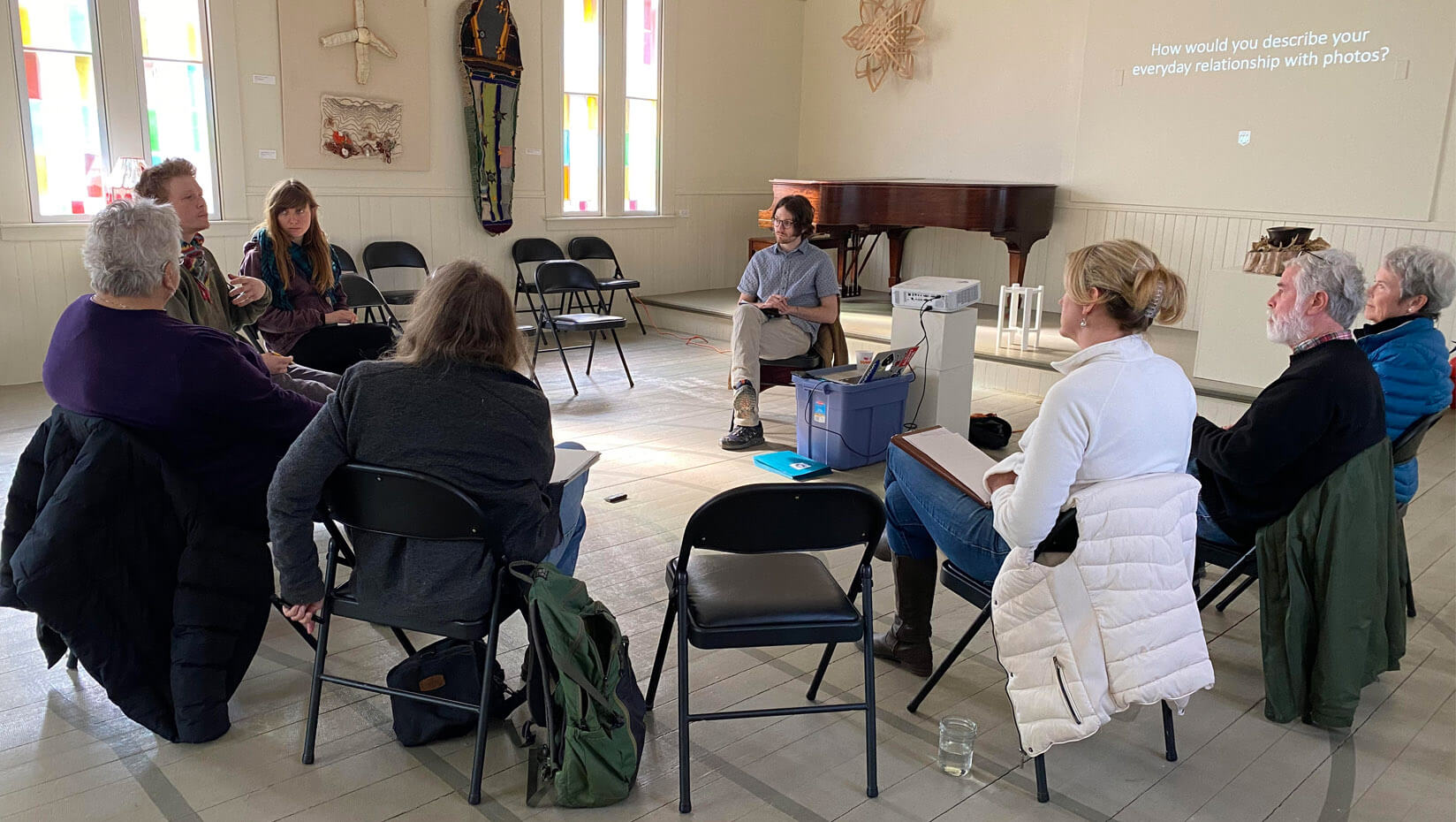
Duffy researches community perspectives through Maine Coast Photovoice Project
Should the environment be viewed as a resource to use or a spectacle to remain untouched by humans?
Kevin Duffy’s interest in Maine community members’ perspectives regarding the complexities of this question, and others related to coastal development, was sparked by his participation in the Sustainable Ecological Aquaculture Network (SEANET) research project.
Duffy, now a fifth-year Ph.D. student in environmental communication at the University of Maine, joined the Maine EPSCoR-funded SEANET grant as a research fellow in 2016. He researched newspaper media representations of aquaculture and the news routines journalists use to deal with covering the complexities of aquaculture development in New England, including the use of “balance” when discussing the positives and negatives of aquaculture.
This research led to Duffy’s interest in the more complicated perspectives of community members. He wanted to look beyond media representation to see the role of the local environment in people’s everyday lives. His goal was to show the complexity of views on and knowledge of environmental change among people in their own community.
For his Maine Coast Photovoice Project, Duffy recruited participants from two different regions, including seasonal and year-round residents living near the Damariscotta River and Bagaduce River estuaries.
The aim of the community-based participatory photo project is to give a voice to community members’ own views through photography. Their own photos tell a story about “sites of value and change” they identify.
“You can take a photo of just about anything and tell a personal story or relate to it,” says Duffy. “So I’m interested in how community members can actually use photos to tell their story. And in what ways they do that.”
Duffy takes a social-ecological systems perspective. He wants to see the connections people make between physical, ecological and social dimensions of multi-use waterfronts, and how people view those connections in relation to opportunities and threats of future change in their community.
He wants to focus on the changes people are seeing in their own environment and help empower them to speak through photographic storytelling — an opportunity for more open public dialogue about resource use than those often mandated for management related decisions.
“I’m really focused on these communities’ ability to not only acknowledge and incorporate change, but respond to it in a way that’s personally relevant to their everyday lives,” says Duffy.
After the photos were taken, Duffy interviewed each recruited community member about the “values and changes” their photos expressed.
This summer, he plans on meeting with people from both regions in virtual focus groups via Zoom — one of several COVID-19-related project adaptations. The focus groups were designed to be a safe space for people to discuss the findings and their feelings. He knows that providing a platform for people to speak out freely about the issues they care about is important, and he takes their participation as “co-researchers” seriously. This is why “that team science aspect of it is really important to me and kind of breaking down those barriers of power,” says Duffy.
After the focus groups are held, Duffy plans to compile a photo exhibition with the goal of involving a wider community. He hopes to have one per region, as well as to have some representation of the project on campus. He may adapt the timing or format of the exhibits to comply with public safety guidelines but hopes to use them as another platform for community dialogue about their visions of change.
Duffy knows each photo tells a different story to each person, so he wants to study the connections between the photos and dialogue. Discussion can open up or change a person’s relationship to these photos, including the meaning of a particular view or action in their everyday life.
Ultimately, Duffy wants to see how people respond to and complicate the question about viewing the environment as a resource or spectacle. He plans to do so by analyzing the photos, interviews and discussions.
“One thing that’s really important to me and part of the reason that I’m doing this project is just to promote skills in practice of visual thinking, learning and communicating,” says Duffy.
He suggests it is critical to use this “skill or adaptive capacity to understand what residents’ place in their own community might look like.
“And how they can navigate these inevitable changes that are going to happen throughout the rest of their life by connecting with and in some cases, empathizing with the views of others, especially if they don’t agree.”
Contact: Margaret Nagle, 207.581.3745
